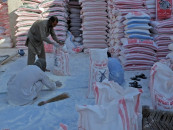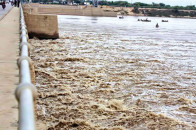LHC moved to rein in drug use in the province
Petition at LHC highlights that govt has failed to implement National Anti-Narcotics Policy 2010

Lahore High Court. PHOTO: LHC.GOV
The ministry had claimed to ensure drug-free schools and prisons, while developing a curriculum under its National Anti-Narcotics Policy 2010. The highest number of estimated drug users was in Punjab at 2.9 million people.
These facts reemerged during hearing of a petition filed by Sheikh Asim Farooq, through his counsel Advocate Ahmed Hasan Khan, at the Lahore High Court.
The petitioner named the Federation of Pakistan (through the Ministry of Narcotics Control), the Drug Regulatory Authority, Inter Agency Task Force Chairman, Punjab chief secretary, primary and secondary health department secretary, school and higher education department secretaries, Punjab Curriculum and Textbook Board Authority chairman and other representatives of various departments as respondents.
He said the Ministry of Narcotics Control (Respondent-1) had set out three policy objectives: reducing supply, demand and seeking international cooperation for drug-free homes, school and prisons. Adiala Jail would be selected as a model prison and Lahore as the first drug-free city. The authority also planned to develop a curriculum to dissuade students from using drugs.
He elaborated that the policy ropes in other partners for its implementation, such as provincial governments which were told to publish anti-drug use messages in school textbooks and notebooks. Other partners included colleges and universities which would develop drug-free educational institutions, promote extracurricular sports and other activities.
The health sector was also involved and asked to establish wards at government hospitals for drug addicts as well as arrange training programmes for doctors and paramedical staff for the treatment of users. The youth sector, meanwhile, was asked to support drug demand reduction or elimination.
He said the respondents completely failed to ensure that even a single section of the National Anti-Narcotics Policy 2010 was implemented. On the other hand, he contended that UNODC’s report revealed that an estimated 6.7 million people, aged between 15 and 64, had used drugs in 2012-13. Pakistan has a large network of pharmaceutical and medical stores that remain largely unregulated. These stores distribute and sell medicines, including controlled medicines and narcotic painkillers, without the requirement for a prescription in most cases.
A daily heroin habit costs about 1.50 to 3.00 USD, yet only 6.5% of heroin users are employed full time. To earn money, one-third report selling blood and 40% exchange sex for drug money. Punjab has the largest number of drug users and people who inject drugs of all provinces. Around 75,000 people inject drugs in Punjab and 2.9million people are estimated to have used a drug in 2012-13. There are about 480,000 heroin users and 86,000 opium users.
The UNODC report is a collaborative effort between UNODC, Ministry of Narcotics Control and Pakistan Bureau of Statistics. The petitioner asked the court to direct the respondents to effectively implement its master plan.
Published in The Express Tribune, September 28th, 2018.



















COMMENTS
Comments are moderated and generally will be posted if they are on-topic and not abusive.
For more information, please see our Comments FAQ